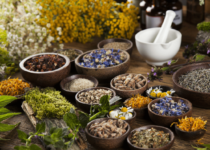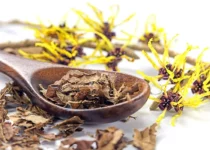The Complete List of Brihatyadi Kashayam Ingredients
Looking to make your own Brihatyadi Kashayam? This blog post will provide a complete list of brihatyadi kashayam ingredients that you will need. This herbal tonic is excellent for overall health and vitality. It is especially beneficial for those who are suffering from any type of urinary system disease.
Let’s look at the ingredients.
Brihati (Solanum Indicum)
Brihati is a small, white, round tuber. It is native to India and is known for its cooling and laxative properties. It is effective at treating respiratory disorders, skin diseases, and digestive disorders. Other names for brihati include Indian nightshade, Solanum indicum, brinjal, eggplant, and aubergine.
Other than this, the active ingredient in brihati is solasodine, which has anti-inflammatory and analgesic properties. The other main constituents of brihati are beta-carotene, lutein, zeaxanthin, lycopene, and solanine. When taken in the recommended dosage, this ayurvedic herb is also safe for most people.
Kantakari (Solanum Xanthocarpum)

Kantakari is a small, herbaceous plant that is native to India. It is being used in traditional Indian medicine for centuries and is beneficial for its many health benefits. Kantakari is among the significant Brihatyadi kashayam ingredients, and it is known to help treat respiratory disorders, coughs, colds, and bronchitis. The best quality of this herb is that it can also help treat urinary infections.
Prishnaparni (Uraria Picta)
This herb is especially beneficial for Kapha dosha and can help clear congestion. Prishnaparni also improves memory and cognitive function. Other benefits of prishnaparni include reducing inflammation, aiding in digestion, supporting respiratory health, boosting immunity, etc.
Shalaparni (Desmodium Gangeticum)
Shalaparni is an annual herb that grows up to two feet in height. It has slender, hairless, and branched stems with small white flowers. The leaves are trifoliate, and the fruits are legumes. The roots of shalaparni are slightly bitter, astringent, and pungent in taste, with sweet, sour, and salty secondary flavors.
Gokshura (Tribulus Terrestris)

Gokshura is an annual herb that grows in tropical and temperate regions. The plant has small, white flowers and produces a small, dark fruit. The root of this herb is used medicinally. Gokshura is native to India and Sri Lanka. In Ayurvedic medicine, it is known as a “rasayana,” which helps promote health and longevity.
Moreover, the roots of gokshura are bitter, astringent, and cooling. They help treat various conditions, including urinary tract infections, kidney stones, anemia, diarrhea, and fever.
The Bottom Line
Brihatyadi kashayam is a potent Ayurvedic herbal decoction that effectively treats a wide range of urinary system issues. Even though it’s quite bitter, Brihatyadi kashayam is worth trying if you struggle with urinary problems that haven’t responded to other treatments. Furthermore, if you want to know about the brihatyadi kashayam ingredients, you must go through the points mentioned above.
Frequently Asked Questions
Q1. What are the major causes of urinary tract infections?
A. The most common cause of urinary infection is E. coli bacteria. These bacteria enter the urethra and travel up to the bladder, causing an infection. Other causes include viruses, fungi, and parasites.
Q2. What is the use of Shalaparni?
A. Shalaparni (Desmodium gangeticum) is an Ayurvedic herb that helps manage skin diseases, diabetes, and urinary disorders.
Q3. How does Gokshura help with kidney stones?
A. Gokshura increases urine output and also has diuretic properties. This helps in the prevention of kidney stones.
Q4. How does Prishnaparni work for urinary diseases?
A. Prishnaparni is an effective diuretic. It helps increase the volume of urine and also the frequency of urination. This is useful in treating urinary tract infections, renal calculi, and edema.



